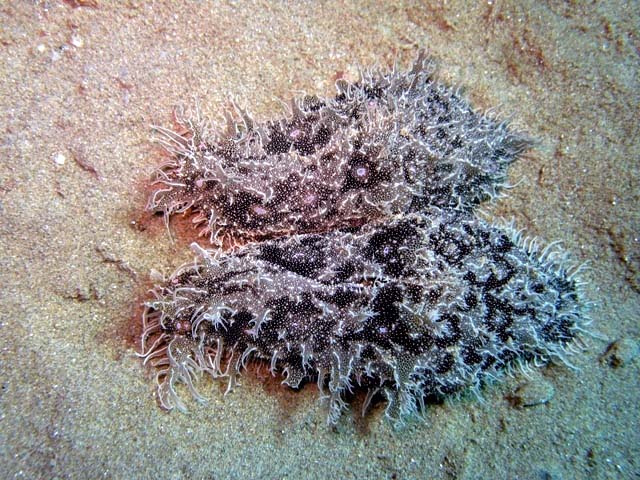| Notarchidae () |
| 25 cm TL (male/unsexed) |
|
benthic; marine; depth range 0 - 30 m |
| Circumglobal tropical, temperate seas and the Mediterranean Sea. |
|
This is a medium- to large-sized benthic opisthobranch mollusc. The body is variably colored, grayish-green to white-tan with dark brown blotches and spots, compact and rounded, with distinct head and neck regions evident. The body is also covered with numerous long, branching fleshy papillae that give the animal its ragged appearance. The gill is covered by a pair of fleshy parapodia. Two long retractile olfactory tentacles called rhinophores occur on the head, and also two fleshy enrolled oral tentacles occur at each side of the mouth. Adults completely lack a shell. |
| Assumed maximum length from Ref. 844. Commonly found in estuaries and tidal swimming pools (Ref. 866). Known from depths of 0 to 30 m (Ref. 7727). It is known to secrete purple ink which is produced from the purple gland, speculated to be a defensive decoy (Ref. 81111). The ink may also be a metabolic by-product in response to eating algae, particularly red algae, as observed with the species under the genus Aplysia (Ref. 81114). Primarily feeds on cyanophytes and diatom mats and films found on sand, mud and other benthic substrata; facultatively it consumes Ectocarpus and Enteromorpha spp. (Ref. 81111). |
|
Not Evaluated (N.E.) Ref. 123251)
|
|
|
Source and more info: www.sealifebase.org. For personal, classroom, and other internal use only. Not for publication.

